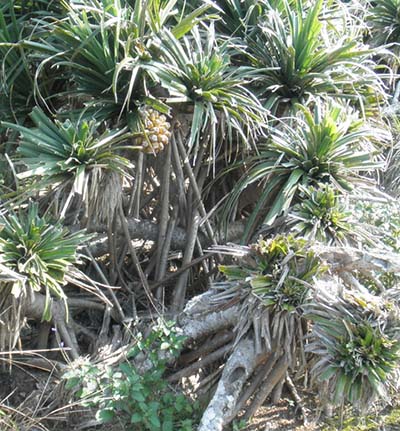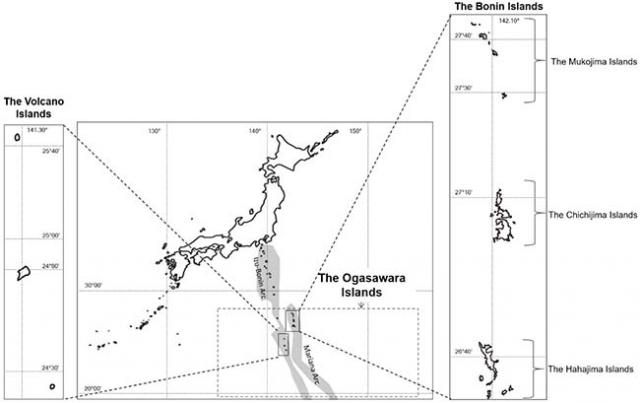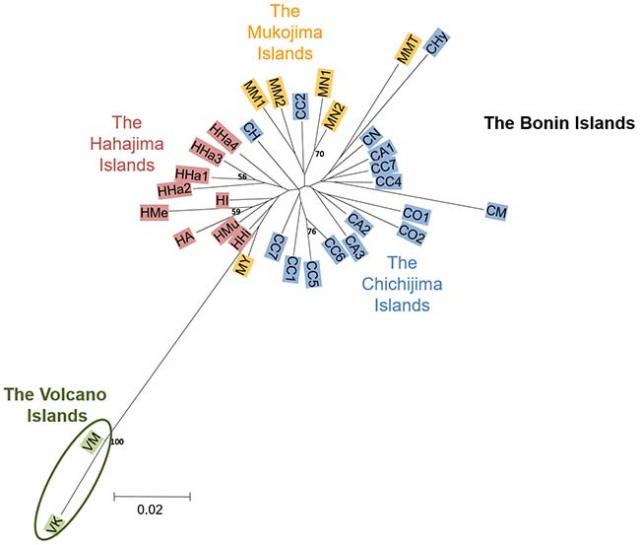Home > Research > Research Results > Research Results 2020 > The genetic diversity of Pandanus boninensis is determined by such factors as the age and location of islands it has migrated to
Update:June 15, 2020
Main content starts here.
The genetic diversity of Pandanus boninensis is determined by such factors as the age and location of islands it has migrated to
| Article title |
Genetic diversity, structure, and demography of Pandanus boninensis (Pandanaceae) with sea drifted seeds, endemic to the Ogasawara Islands of Japan: Comparison between young and old islands |
|---|---|
| Author (affiliation) |
Setsuko Suzuki (a), Kyoko Sugai (b), Ichiro Tamaki (c), Koji Takayama (d), Hidetoshi Kato (e), Hiroshi Yoshimaru (a) (a) Department of Forest Molecular Genetics and Biotechnology, FFPRI, Tsukuba, Ibaraki, Japan. (b) Shimane University, Matsue, Shimane, Japan. (c) Gifu Academy of Forest Science and Culture, Mino, Gifu, Japan. (d) Kyoto University, Kyoto, Japan. (e) Tokyo Metropolitan University, Hachioji, Tokyo, Japan. |
| Publication Journal |
Molecular Ecology, volume 29, April 2020 DOI:10.1111/mec.15383( External link ) |
| Content introduction |
The Ogasawara Islands consist of old islands that were formed from 34 to 44 million years ago (the Mukojima Islands, the Chichijima Islands, and the Hahajima Islands, belonging to the Bonin Islands), and newer islands to the south (the Volcano Islands) that were formed from 10 to 750 thousand years ago (Fig.1). Pandanus boninensis (Pandanaceae) (Photo 1) is endemic to the Ogasawara Islands, and its fruits, which can reach up to 8cm in length, are distributed mainly by sea drifting and by Ookoumori fruit bats which are also endemic to the islands. The objective of the present study was to examine the genetic diversity and structure, and patterns of expansion, of 34 populations of P. boninensis occurring in 20 of the Ogasawara Islands. As a result, it was found that there was less diversity in the newer islands than in the older islands, as well as significant genetic differences between the two groups of populations. Moreover, P. boninensis populations expanded after they reached the older islands, but remained small in the newer islands. In addition, it could be seen that genetic migration tended to go from south to north, with genetic diversity increasing towards the north. Although P. boninensis of the Volcano Islands had migrated from the Bonin Islands, its populations could not expand, and there was almost no subsequent genetic migration. Therefore, it appears that with their low genetic diversity, these populations became genetically diverse from the original populations. In the present study, we were able to gain an understanding of the process by which genetic diversity was established after they reached isolated newer islands.
Photo 1:In the upper left part of the photo is a pineapple-shaped aggregate of fruits that can measure up to 20cm in diameter.
Figure 1: Positional relationship between the Bonin and Volcano islands. The distance between the Mukojima Islands and the Chichijima Islands is approximately 40km, as is the distance between the Chichijima Islands and the Hahajima Islands. The distance between the Bonin and Volcano islands is approximately 150km.
Figure 2: Genetic separation of P. boninensis between the Bonin and Volcano islands. It is apparent that there are significant differences between the populations of the Bonin Islands (yellow: the Mukojima Islands; blue: the Chichijima Islands; red: the Hahajima Islands) and the Volcano Islands (green). |
Copyright © Forest Research and Management Organization. All rights reserved.



